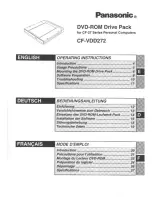
533
Troubleshooting
Type
Cause
Remedy
Only use motors suitable for
applications with inverters.
Connect the AC reactor to the
inverter output (set the carrier
frequency to 3 kHz).
The motor fan has stopped or the fan
is obstructed with debris.
Check the motor fan and remove
any foreign objects.
The motor
stops during
acceleration.
The load is too high.
Reduce the load.
Increase the volume of the torque
boost.
Replace the motor and the inverter
with models with capacity
appropriate for the load.
The current is too big.
If the output current exceeds the
rated load, decrease the torque
boost.
The motor
stops when
connected to
load.
The load is too high.
Reduce the load.
Replace the motor and the inverter
with models with capacity
appropriate for the load.
The motor does
not accelerate.
/The
acceleration
time is too long.
The frequency command value is low. Set an appropriate value.
The load is too high.
Reduce the load and increase the
acceleration time. Check the
mechanical brake status.
The acceleration time is too long.
Change the acceleration time.
The combined values of the motor
properties and the inverter parameter
are incorrect.
Change the motor related
parameters.
The stall prevention level during
acceleration is low.
Change the stall prevention level.
The stall prevention level during
operation is low.
Change the stall prevention level.
Motor speed
varies during
operation.
There is a high variance in load.
Replace the motor and inverter with
models with increased capacity.
The input voltage varies.
Reduce input voltage variation.
Summary of Contents for LSLV-H100 Series
Page 17: ...Preparing the Installation 4 37 90 kW 3 Phase ...
Page 18: ...Preparing the Installation 5 110 132 kW 3 Phase ...
Page 19: ...Preparing the Installation 6 160 185 kW 3 Phase ...
Page 20: ...Preparing the Installation 7 220 250 kW 3 Phase ...
Page 21: ...Preparing the Installation 8 315 400 kW 3 Phase ...
Page 22: ...Preparing the Installation 9 500 kW 3 Phase ...
Page 35: ...Installing the Inverter 22 ...
Page 50: ...37 Installing the Inverter Input and Output Control Terminal Block Wiring Diagram ...
Page 104: ...91 Learning Basic Features 0 10 V Input Voltage Setting Details V1 Quantizing ...
Page 181: ...168 Learning Advanced Features PID Command Block ...
Page 182: ...169 Learning Advanced Features ...
Page 183: ...170 Learning Advanced Features PID Feedback Block ...
Page 184: ...171 Learning Advanced Features PID Output Block ...
Page 185: ...172 Learning Advanced Features PID Output Mode Block ...
Page 198: ...185 Learning Advanced Features EPID1 Control block ...
Page 199: ...186 Learning Advanced Features EPID2 Control block ...
Page 220: ...207 Learning Advanced Features ...
Page 235: ...222 Learning Advanced Features The Time Chart for the Exception Day ...
Page 506: ...Table of Functions 493 ...
Page 520: ...Table of Functions 507 8 16 4 Cooling Tower MC4 Group ...
Page 549: ...Troubleshooting 536 ...
Page 569: ...Technical Specification 556 11 3 External Dimensions 0 75 30 kW 3 phase 37 90 kW 3 phase ...
Page 570: ...Technical Specification 557 110 185 kW 3 phase ...
Page 601: ...588 ...
Page 602: ...589 ...
Page 603: ...590 ...
















































